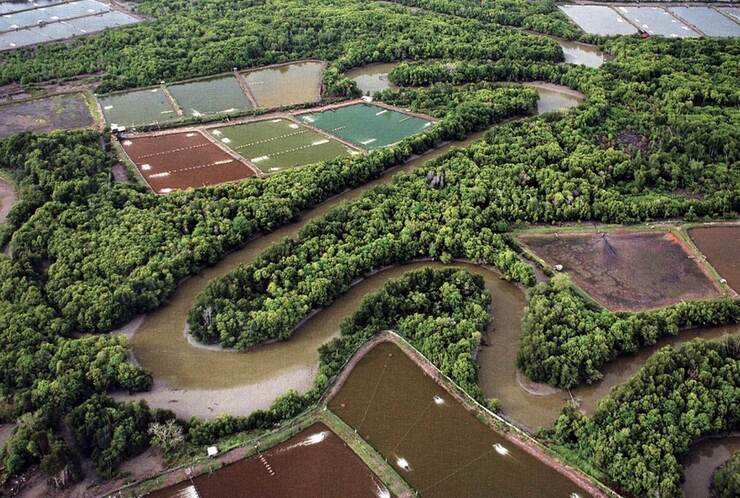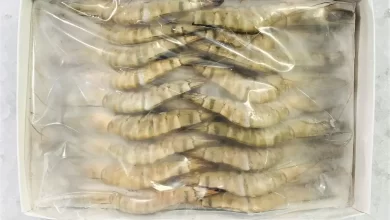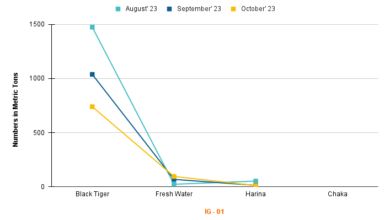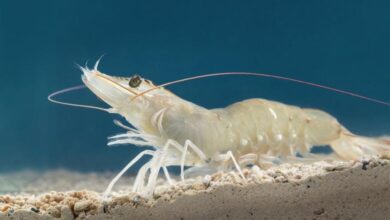
Globally, the shrimp farming sector is quite profitable. Therefore, numerous industrialized farming methods have been developed in search of profitable revenues. However, farming shrimp through sustainable means is not an easy task.
Shrimp farming that is sustainable safeguards the environment, benefits the communities that depend on it, and ensures stable profits. Shrimp farmers can reduce environmental impact and ensure the sustainability of the industry by implementing sustainable shrimp farming practices, such as closed-system ponds and recirculating aquaculture systems. A sustainable farming practice can also enhance the farm’s reputation and marketability.
Vietnam can be an example of sustainable shrimp farming in the world. The shrimp farming industry has been a big part of the Vietnamese economy for decades. In Vietnam, Penaeus monodon, the scientific name for giant tiger prawns, is the most widely produced product. This ASEAN member produces 816 thousand metric tons annually, making about 37% of all world output.
In spite of its profitable nature, shrimp farming in rural Vietnam is extremely uncertain because of diseases. Precarious rainfall and climate change contribute to the problem, making disease control more difficult.
Despite these challenges, farmers are tackling them in a variety of ways. Farmers in the Mekong delta, for instance, cultivate shrimp using an ecosystem-based approach. Mekong Delta farms produce nearly 95% of all the Black Tiger Prawns harvested in Vietnam.
Earlier in 2013, a program named Mangroves and Markets (MAM) began in this region. Integrated shrimp farming, an environmentally beneficial mode of production, will be used by small-scale intense and enhanced extensive shrimp growers as part of the initiative.
The government also provided farmers with training in organic shrimp growing; some also got financial support for remodeling their shrimp ponds and for locating shrimp seed from authorized hatcheries. As a result, farmers protect mangroves and offer certified organic shrimp to global customers who are willing to pay higher prices for organic seafood.
There are also some initiatives being tested in Vietnam. A notable initiative has been taken by Vietnam-Australia JSC, a foreign-invested shrimp farming company. They pioneered a project called super intensive farming throughout the country. This super intense strategy is undertaken by relocating shrimp farms inside glass houses under strict management.
In addition, farmers now use molecular diagnostic test kits on-site that are convenient, hassle-free, and precise. The analysis allows shrimp farmers to identify diseases in their farms. By detecting diseases immediately, they are able to curb losses from diseases.
There is great potential for sustainable shrimp farming in Vietnam in the future. With state and private interests aligning, Vietnam’s shrimp industry is steadily moving toward more sustainable, stable production methods.
By 2050, Vietnam aims to export $10 billion worth of shrimp, presenting a vast and untapped market. In recognition of this potential, the Vietnamese government actively supports the industry’s sustainable development.
While Vietnam has become a leader in sustainable shrimp farming, Bangladesh offers the opposite example.
In Bangladesh, shrimp farming has expanded rapidly in largely unplanned and unregulated ways. The regulatory efforts to curb the expansion have largely been ineffective.
Both environment and society are adversely affected by this haphazard and unplanned method of shrimp farming. For example, a large portion of the 75 km2 of mangrove vegetation that existed in 1975 in the ‘Chakaria Sundarbans’ has been cleared for shrimp farming, leaving a sparse scrub forest of 9.73 km2.
A way to improve the sustainability of the shrimp farming industry in Bangladesh would be by introducing Integrated Coastal Zone Management (ICZM) into the industry so that it could become more sustainable. To implement ICZM on a large scale, four key areas must be addressed in order for it to be successful;
1. Financing
2. Scientific and Technological Means
3. Human Resource Development
4. Capacity-building.
Furthermore, a community-based monitoring system may be the most promising approach to reducing the impacts of shrimp farming on society, the economy, and the environment The shrimp industry plays a significant role in the economic development of a country as it offers employment opportunities and drives the growth of the GDP. Despite this, this vital sector is faced with mounting competition and a variety of challenges that require innovative solutions. The development of sustainable practices in this vital sector can be promoted when countries address these challenges through sustainable means.
Jaber Bin Abdul Bari
Department of Oceanography, NSTU




